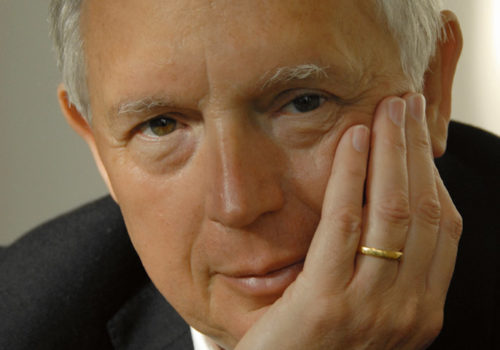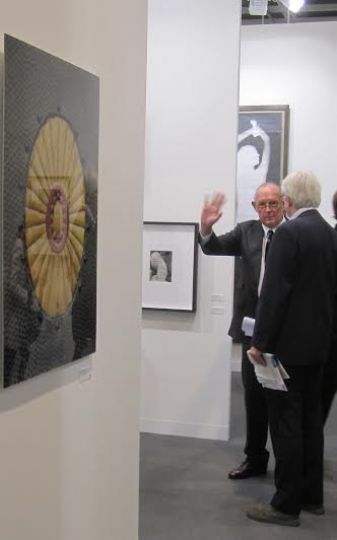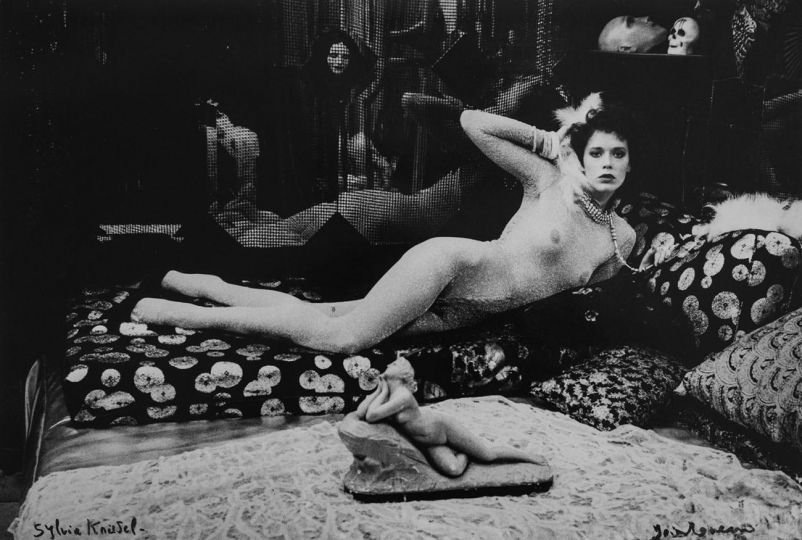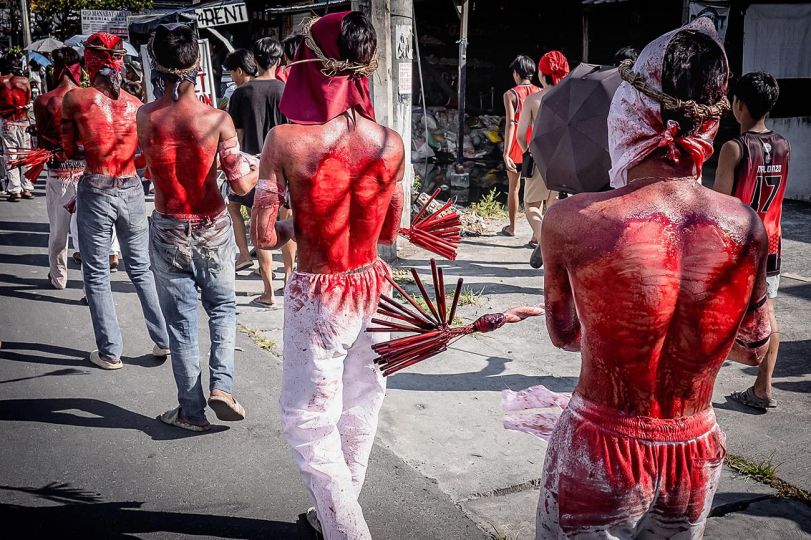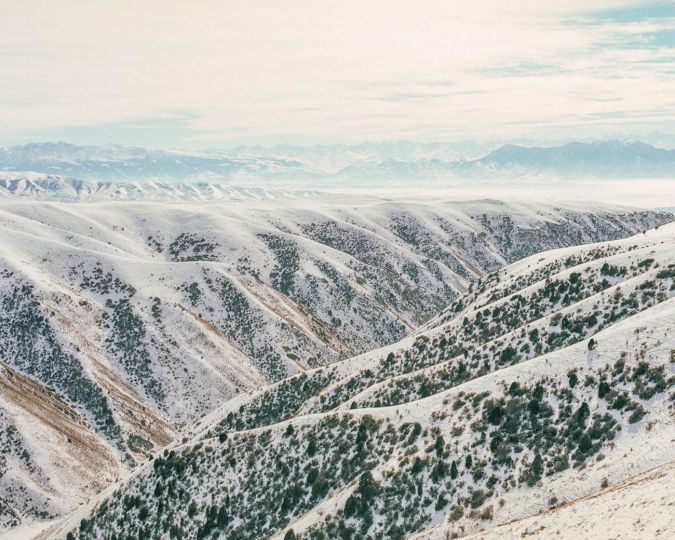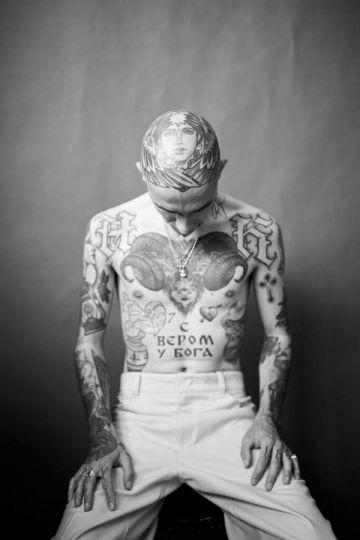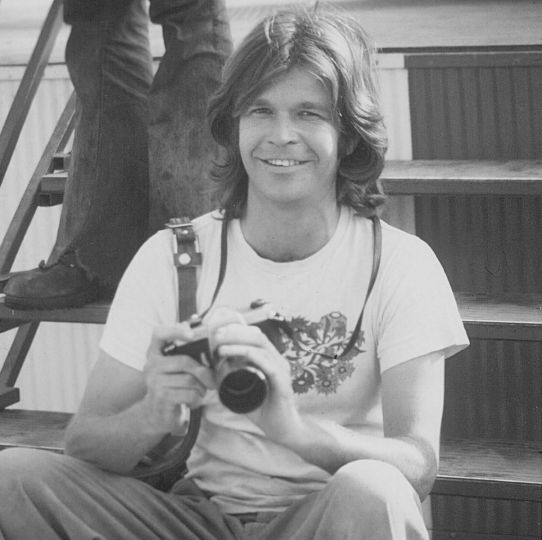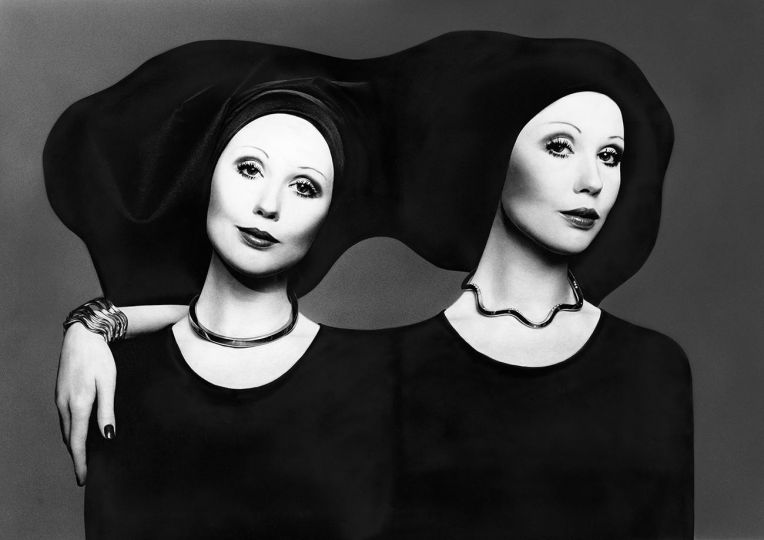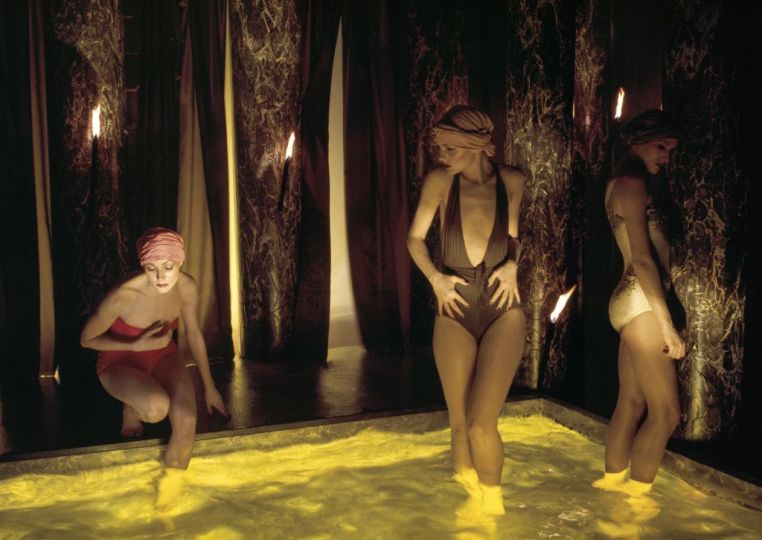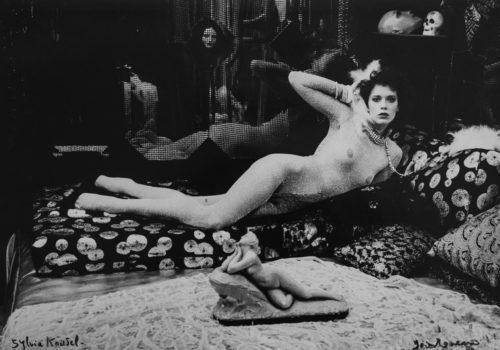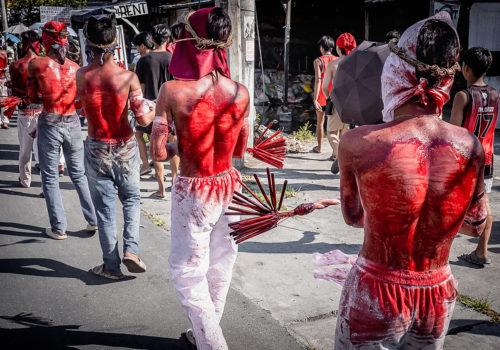Testimonies
Michelle Chomette (Galerie Michelle Chomette, Paris, France) :
In 1975 or 1976, eyes still virgin and my head full of projects, I arrived at Art Basel and felt a thundrous photographic revelation in the face of works displayed on the very first altar which had been devoted to it in this venue – a huge stand shared by Harry Lunn, Maggie Weston, Robert Hershkowitz + Russ Anderson, Anna Auer, Jurgen and Ann Wilde, and the tandem Rudolf Kicken + Wilhelm Schürmann.
It is thanks to these first priests that I enterred photography and became, in turn, its missionary. This choice of religious terminology is paradoxical in a context devoted to merchants in the temple but, aside from Harry, the visionnary, none of us risked at this time affirm that photography would be a market in the strictest sense, it was more like an apostolate and it is thus that I continue to live it.
My first encounter with a very young Rudi was determinating in opening my eyes, first, to the rich production of German modernism from the twenties and thirties, then, to the inventive Czech sensuality. I remember his very first gallery in Aachen (Aix La Chapelle), in fact like a chapel of white ceramic tiles, where the constructed vigor of a Werner Mantz or the mysterious opalescence of a Josef Sudek demonstrated magnificently that the exact alliance of the eye, the light, the shadows and the silver of the prints sufficed to render the world. Thus, it is “under the influence” that I launched myself in Paris upon the contagious adventure of photography.
Over the decades, I saw Rudi come out of his chrysalis and affirm himself as a peerless businessman, as much through the choice of his domains of activity as in the art of directing them, until he adopted the elegant look of the man always on the move, his body swelling with the importance of good taste, but the eye always alert.
Beyond the emotion which his loss engenders among those who, like me, knew Rudolf Kicken in his beginnings, it is the entire art world, and more particularly of photography, which suffers a loss and feels it is essential to pay tribute to the work he accomplished.
Howard Greenberg (Howard Greenberg Gallery, New York, USA) :
When I was a very young photo dealer Rudy introduced himself to me and bought a photograph. This was at my first AIPAD about 30 years ago. I had never met such a suave, engaging European before. He was like a movie star but we quickly moved past that as our shared passion for photography and hunger for discovering what was out there in its history bonded us. During these last ten years the relationship grew, as we partnered in many projects, most notably the Czech modern show and book. His marriage and new family with Annette fostered a new more personal relationship with my family as well. Rudy was responsible for convincing me to try art fairs, beginning with Miami Basel. We collaborated closely and enjoyed hosting joint dinners for friends and clients, and in the process our staffs became close friends as well.
Rudy cannot be replaced; for what he did for our field. He was a true pioneer and taught us about so much European photography for the first time. He was a brilliant curator, an extraordinary (closet) architect, a daring businessman, and a bon vivant in every way. We were true friends and I will sorely miss him.
Peter Galassi :
I treasure my copy of the handsome Josef Sudek catalogue published by Edition Lichttropfen, Aachen, in 1976. It may be the first of Rudolf’s many impressive catalogues; his reputation as a pioneer is richly deserved. The title page bears an incription to me, “Mit vielen Dank für die guten Ratschläge und der Hilfe bei der Erforschung den ‘weiblichen amerikanischen Seelen’!” (with many thanks for the good advice and help in studying the ‘American female heart’). As anyone who has met Annette Kicken can plainly see, Rudolf loved beautiful women. That love was the keystone of his irrepressible joie de vivre, which was sure to infect whoever had the good fortune to be in his company.
Françoise Paviot (Galerie Françoise Paviot, Paris, France) :
Here is a photograph taken at the hotel where we stayed for many years with Alain, in the company of Rudolf and Dieter Appelt, during Art Basel. It was four years ago I believe. In fact I realize that I always saw Rudolf working, the only time he was resting was at dinner, at the end of which we would always enjoy our famous Fernet-Branca.
For me his memory is essentially linked to art fairs and I must admit it is he who made me discover the German artists I work with today : Dieter Appelt, Anna and Bernhard Blume and Rudolf Bonvie. I was not working at the gallery with Alain yet but my eye discovered and learned to appreciate all the works as I roamed through Art Cologne and Art Basel. When we opened up our space, I naturally turned to them because their images had guided me for several years.
I wanted to say Thank You to Rudolf for all these image lessons.
Alain Paviot :
Kicken… more than a friend.
Forty years, several photographs impossible to count and a long road marked by souvenirs sealed in my memory. Atget and a first collaboration, an incredible collection of prints by Lazslo-Moholy Nagy, an unforgettable trip from Tallahassee to Boston, a few Porsches, ten years together at Art Basel… The list could be much longer, but it is so personal that I prefer to save it for close friends.
So, as he would say, “bye, bye, my friend”.
Peter MacGill (Pace MacGill Gallery, New York, USA) :
Here are two Polaroids from the Basel Art Fair, 1978.
Four galleries, Lunn, G. Ray Hawkins, Schürmann Kicken and LIGHT shared, what I remember to be the largest booth in the fair for what seemed like an eternity. There were no photography collectors in those days or, at least, none came to the Basel Art Fair. Harry and Rudy were in charge of evening entertainment because they were the worldliest of the group.
I took a brand new Brooks Brothers seersucker suit with me thinking it would be cool and that it would be met with sartorial approval. Well, it was cool but it turned out that the only people in that part of the world who wore seersucker suits were television game show announcers. Rudolf would borrow my jacket whenever I dared to wear it and tour through the fair to see what kind of reaction he would get.
Those were the days.
We will all miss Rudolf, his intense spirit and his love of photography very much.
Margaret Weston (Weston Gallery, Carmel, USA) :
I remember the first show in Basel we’d ever done. Matt was 12…so it was 38 years ago! Matthew and I had such wonderful times in Germany with Rudy and I had great regard for him. He will be missed.
Matthew Weston :
I remember Rudy always being a gracious host and great fun to spend time with! I’ll never forget the last time at the Cologne art fair and the fantastic conversation we had over a sumptuous Indian meal. I will miss his boyish character and the glint in his eye.
Denise Bethel (Chairman, Photographs, Americas, Sotheby’s, New York, USA) :
I met Rudi in the early 1980s, when I was the photo expert at Swann Galleries in New York. It was all different then. Like me, and so many of us now in our 60s and 70s, Rudi was involved in photography mostly out of love . . . You had to be crazy to go into it only for money. In fact, our colleagues in paintings and sculpture and prints and drawings (“real art”), thought we all WERE crazy. Rudi added a real touch of European glamour to the crowd who frequented Swann in those days. It was always a pleasure to see him in the rooms, and after I moved to Sotheby’s, and the field started to explode, we were all riding on a wave that got higher beyond our early imaginings.
A few years ago, I was flattered that Rudi asked me to write something for a book that commemorated the best things he’d handled over the decades. None of us who wrote thought of it at the time as a book that would become a memorial volume.
With Rudi’s passing, it hits home to those of us in that first group of crazies that we are riding into the sunset . . . But not this tragic way, not now, not quite yet—-we hope. Life can change in a minute. When we think of Rudi, we want to remember the old days, and be grateful we all knew him, and each other, in those early good times.
Robert Mann (Robert Mann Gallery, New York, USA) :
I first met Rudy in Harry H. Lunn Jr.’s gallery on P Street, in Washington DC. It was shortly after I began working for Harry in 1978. Rudy was traveling with a small entourage and had come to visit Harry to arrange for consignments and purchases. I was very wet behind the ears but I understood the tension that was in the air : Harry was more interested in sales and Rudy was more interested in consignments. Typically these kind of situations could escalate into unhappy regions but Rudy skillfully negotiated with Harry and the two collaborated happily for many years to follow.
Rudy had a great eye and was a very skilled dealer. His art fair presentations were always very well thought out and choreographed. While many of our colleagues simply hung photographs Rudy always “curated” meaningful presentations where the dialogues and relationships between the photographs he hung were educational and fascinating. He will surely be missed by the entire photography community.
Hans P. Krauss Jr. (Sun Pictures, New York, USA) :
Rudolf was a pioneer in our field, discovering worthy photographers of the past and present. Together with Annette, he curated lively exhibitions and art fair stands. They produced informative and beautiful catalogues that are lasting reference books. Rudolf inspired many young dealers by his example and attracted an impressive list of collectors. We all mourn the tragic loss of Rudolf.
Alex Novak (Vintage Works Ltd, Pennsylvania, USA) :
Rudy was not just a colleague but a dear friend. His passing is a tragedy for his family and friends. As one of the last true giants in the field of photography, Rudolf’s presence and experience will be sorely missed. Words seem inadequate in this instance in the face of this loss. His eye was one of the great ones in the photography field. His pioneering work exploring and selling photography set the bar for all of us who followed. But he was also a man with a great and generous heart and a wonderful sense of humor, who greatly loved his family. I remember him and Annette showing me an album of beautiful photographs that Rudy had just taken of his children. The caring and love that he felt for them was so very evident. My heart goes out to his wife Annette and their children.
Johannes Faber (Galerie Johannes Faber, Vienna, Austria) :
Since the early 1970s Rudi Kicken was deeply attached to Austria. He went for his studies to Vienna and visited there one of the first European galleries devoted to photography – “Die Brücke”. Here he bought his fist photograph. We shared our deep devotion to the Austrian photographers Heinrich Kühn, Rudolf Koppitz, and Anton Josef Trcka with Rudi.
Tom Gitterman (Tom Gitterman Gallery, New York, USA) :
Rudy was a ground-breaking dealer in our field. So much of what I admire and seek to find, he dealt with first. I first met him well over twenty years ago when I was right out of college working for Zabriskie. Yet it was a visit to Berlin in 2003 when I had left Howard Greenberg to start my own Gallery that I would never forget. I had just come from the Breton sale in Paris where I had failed to buy anything. Rudy and Annette let me stay with them in their apartment. Seeing Rudy so happy with his beautiful wife and growing business in Berlin encouraged me to stick to my ideals and focus on my passions. It was after that trip I started dating Kristina (for the second time) and we got married two years later.
Rudy’s warmth and support for me has always meant a great deal. His level of connoisseurship and excellence will remain an inspiration. I will miss him.
Joshua Mann Pailet (A Gallery for Fine Photography, New Orleans, USA) :
Rudi Kicken, a dear man who engaged with his eyes and spirit. Always with a smile reaching out to me. The boyish twinkle in his face. New Orleans and Germany intertwined with life and photography. Basel, NYC, Paris, London all swept up together as the early years became the later ones. Photography’s audience growing and Rudi playing a major role in taste making.
Too soon we say goodbye to another fine colleague on the road filled with quality and great memories.
Rudi’s life and wife and children are his most important works of art.
Never to be forgotten. With Respect and Love.
Christophe Lunn (Photo Vivienne, Paris, France) :
In the early 1970s when my father Harry H. Lunn Jr. began selling photographs, many visitors from around the world would stay overnight in our house on Capitol Hill, in Washington D.C. There were only a handfull of dealers at the time and, rather than be competitive and guarded about the unravelling of sources or trade secrets, the attitude was more one of cooperation, sharing information, swapping prints and giving sizeable dealer discounts on large stocks of material by one artist or another to establish the market globally. The dealers then were all in the same game : discovering or unearthing quality photographers and elevating photographic prints to the status of art, so they might be recognized by museums and collectors as such. Harry would introduce these visitors as our “uncles”. Rudi was one of them.
What I remember most about Rudi was his and my father’s (re)discovery of Heinrich Kühn, a central figure of the Viennese Secessionist movement. I was barely 10, but I still picture the Innsbruck Olympic ski jump Rudi pointed out on our way to the house of Frau Schönitzer Kühn. Of course, once we arrived, I was more interested in the grandchildren’s Lego trove, our hosts amazing homemade pastries and trying to feed a small kitten a strand of grass I had dipped in Schnapps, than the prints Rudi and my father were viewing. I would learn to appreciate them later, the poetry of the images, the technical mastery required in capturing them and the time-consuming craftsmanship involved in the complex gum bichromate or bromoil transfer processes. When I look at a Heinrich Kühn print, I always think of uncle Rudolf.
I recall more recently a visit to TEFAF Maastricht (2012), where I was impressed and seduced by Rudi and his wife Annette’s finely curated stand. Their presentation mixed sculptural objects with photography, blending together thematically : a Greek bronze helmet from the 6th-4th century BC juxtaposed with a photograph of a skull by Dieter Appelt, or a print of Diane Arbus’ Headless Man next to a metal and leather mask by the contemporary artist Mathieu Mercier. Although it was clear I was not a customer, Rudi took his time to explain the display with the relish of a young child walking me through a candy store.
One cannot list all the major collections, both private and public, Rudi helped create. He will be truly missed but will remain an inspiration for all of us who dare to walk in the footsteps of giants.
Russ Anderson (Perspective Fine Art, California, USA)
When we began there was almost no market for photographs. In those earliest days we all struggled to make it work. Though we were certainly dedicated it was Rudi’s charm and energy that infected us all with hope.
Rudi and Harry believed strongly that our mutual collaboration was essential for the market to grow. It was not easy breaking through the European dismissal of photographs as art, let alone valuable art. We had to battle to educate our potential clients, fight for media support and convince the art market establishment that we belonged. Rudi did it with such great sophistication and taste that he made easier for the rest of us. Together we worked hard and each success by one of us was accepted as a success for us all. Most importantly we enjoyed each other’s company and Rudi especially took the trouble to make everyone who entered the milieu feel welcome. He had a great eye and created elegant and thoughtful exhibitions. He thought of all photographs as “modern” and saw what we were doing as avant-garde. He had a keen business sense but, always, he wanted it to be fun. And because of him, it was. We had such a great time together.
Most of all I recall Rudi at the center of the evenings, the long dinners with such wonderful friends and the hours of conversation. Often toward the end of such evenings Rudi would become philosophical and his discussion reflective of what we all were experiencing. One dinner I recall following a long day at Basel ten or more of us were tightly seated at long table in a country restaurant in southern Germany. Laughter, complaints, earnest discussions, small celebrations, care and concern, we were a family in so many ways. Rudi and I were at one corner with Heidi Reckerman. As the evening came to an end Rudi leaned in, pulled the two of us close and with that soft smile he said, “this is so much fun. this is so important, this makes it all worthwhile.”
Thank you Rudi.

